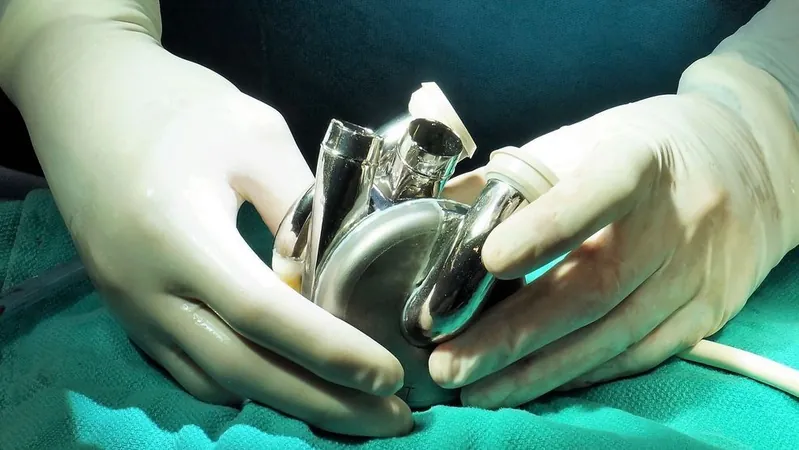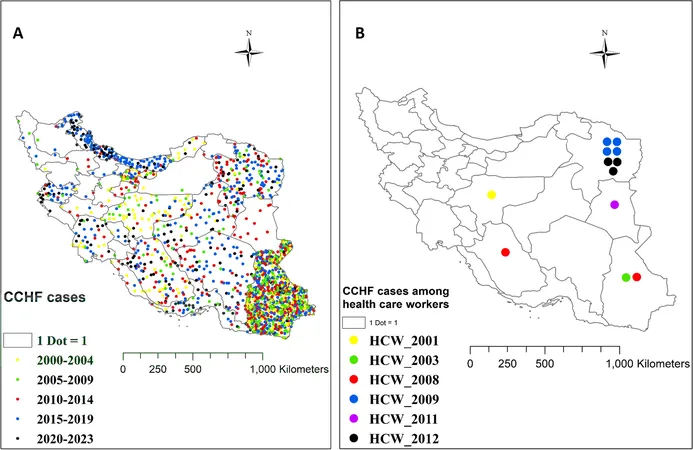
Revolutionary Gas Bubble Technology Could Transform Lung Cancer Treatment!
2024-11-21
Author: Nur
Revolutionary Gas Bubble Technology Could Transform Lung Cancer Treatment!
In a groundbreaking development, researchers have unveiled a novel method of delivering nanomedicines using gas bubbles, marking a significant advancement in treating lung cancer. This innovative approach allows for precise targeting of cytotoxins directly to cancerous lungs, effectively reducing side effects typically associated with conventional treatments.
Exciting findings from SINTEF’s experiments on mice have shown remarkable results, with tumors significantly shrinking in size within just 30 days post-treatment initiation. This cutting-edge research has been published in the European Journal of Pharmaceutical Sciences, and its promising nature has led the research team to secure a patent for the technology. Additionally, SINTEF has partnered with a pharmaceutical company, advancing the potential of this treatment further.
"We’re very confident that this approach may offer us a new cure for lung cancer," claims Andreas Åslund, the project manager and researcher at SINTEF’s Department of Biotechnology and Nanomedicine.
The Unexpected Journey: From Brain to Lungs
Interestingly, this breakthrough did not initially target lung cancer; the research team was originally focused on developing methods to deliver drugs to the brain, challenging due to the protective blood-brain barrier. To tackle this, they created gas bubbles encapsulating nanocapsules that house the medication. These bubbles could be activated using ultrasound to release the drugs effectively through the barrier.
However, during their research, they made a surprising discovery: the gas bubbles were preferentially accumulating in the lungs of patients. Instead of seeing this as a setback, Åslund and his team turned the situation around to focus on using these bubbles to target lung tumors directly.
The nanoscale size of the nanocapsules—so small that up to 100 can fit across the width of a human hair—enables this precise delivery system to function efficiently. Notably, only about 10% of the encapsulated material consists of the actual drug.
How It Works: A Deep Dive into Delivery
The unique application of gas bubbles for drug delivery in the lungs stems from the specific design that enables the nanoparticles to be released directly into the lung tissue. When injected intravenously, medications typically navigate through the bloodstream and heart before reaching the lungs. However, once within the lung's capillary network, which features especially narrow vessels, the microbubbles can spontaneously burst. This mechanism allows the nanoparticles to be freed directly into the lung tissue without requiring ultrasound intervention.
The origin of this technology dates back to 2014, with over ten years of dedicated research leading to multiple medicinal innovations, including a drug delivery platform for treating peritoneal cancer, which inspired the formation of the spin-off company NaDeNo. Today, the research team is hopeful that their findings could offer an effective treatment option for lung cancer patients.
Gentle Yet Effective Treatment
One of the significant benefits of nanomedicines is their localized action, allowing for stronger medications while minimizing damage to surrounding healthy tissue. "This technology enables us to administer more potent drugs without worrying about severe side effects. The precision of treatment means patients can handle these drugs better," Åslund emphasizes.
Notably, the implications of this gas bubble technology extend beyond lung cancer. Researchers believe that it could also revolutionize the treatment of various other lung disorders, including cystic fibrosis, severe infections, and pulmonary emphysema.
As the quest for more effective and less intrusive cancer treatments continues, this innovative gas bubble method represents a beacon of hope for lung cancer patients and others suffering from challenging lung conditions. Keep an eye out for this promising technology as it approaches clinical trials!



 Brasil (PT)
Brasil (PT)
 Canada (EN)
Canada (EN)
 Chile (ES)
Chile (ES)
 España (ES)
España (ES)
 France (FR)
France (FR)
 Hong Kong (EN)
Hong Kong (EN)
 Italia (IT)
Italia (IT)
 日本 (JA)
日本 (JA)
 Magyarország (HU)
Magyarország (HU)
 Norge (NO)
Norge (NO)
 Polska (PL)
Polska (PL)
 Schweiz (DE)
Schweiz (DE)
 Singapore (EN)
Singapore (EN)
 Sverige (SV)
Sverige (SV)
 Suomi (FI)
Suomi (FI)
 Türkiye (TR)
Türkiye (TR)